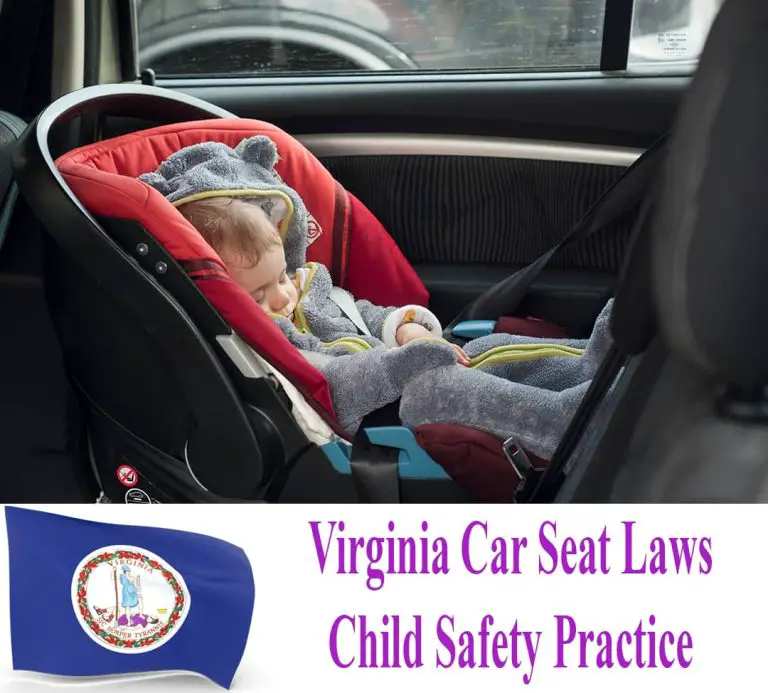Virginia Car Seat Laws Explained: Everything You Need to Know

Table of Contents
Car seat laws are essential for ensuring the safety of children while traveling in a vehicle. According to the National Highway Traffic Safety Administration (NHTSA), car crashes are the leading cause of death for children aged 1-13 in the United States. However, proper use of car seats can reduce the risk of fatal injury for infants by 71% and for toddlers by 54% (NHTSA, 2021).
Virginia car seat laws require children under the age of eight to be secured in a child restraint device that meets federal safety standards, such as a car seat or booster seat. The law also specifies the types of child restraints required based on the child’s age and weight. Failure to comply with these laws can result in fines and penalties and put the child at risk of severe injury or death.
This guide will provide an overview of the car seat laws in Virginia, including the requirements for rear-facing car seats, forward-facing car seats, booster seats, and seat belts.
Virginia Car Seat Laws
The laws in Virginia require children to be properly secured in a car seat installed in the vehicle’s back seat until they are at least eight years old or 4’9″ tall. Failure to comply with Virginia’s car seat laws may result in a fine of up to $500.
In the event that the vehicle does not have a back seat, like a single cab truck, the car seat may be placed in the front passenger seat, only if the airbag has been disabled.
Rear-Facing Car Seats
In Virginia, the law requires infants to be in a rear-facing car seat until they are at least two years old or reaches the minimum weight limit for a forward-facing car seat. The American Academy of Pediatrics recommends that infants and young children ride in rear-facing car seats until they reach the age of two or until they exceed the weight or height limits of the car seat.
Rear-facing car seats offer the best protection for a child’s head, neck, and spine, which are still developing during infancy and toddlerhood. Additionally, rear-facing car seats can reduce the risk of injury or death in the event of a crash.
Forward-Facing Car Seat Laws
In Virginia, car seat laws require children to be restrained in a rear-facing car seat until they are at least two years old or exceed the car seat’s minimum weight limit. After that, children can use a forward-facing car seat with a harness until they are at least four years old or reach the car seat’s maximum weight limit.
Front Seat Laws and Age Requirement
When it comes to Virginia front seat laws, one critical aspect to consider is the age requirement for children sitting in the front seat. While no specific age limit is mandated by law, it is highly recommended that children under 13 should always sit in the back seat for safety reasons.
The safety concerns with children sitting in the front seat are primarily related to the risk of injury from airbags. In the event of a collision, airbags can deploy with tremendous force, which can cause severe harm or even death to a child who is not big enough or strong enough to withstand the impact. This risk is significantly reduced by keeping children in the back seat.
Virginia Booster Seat Laws
Virginia car seat laws require children under eight years old to be secured in a child restraint device, which can be a car seat or booster seat, depending on their age, weight, and height. Booster seats are crucial for children who have outgrown their car seats but are not yet tall enough to use adult seat belts safely.
The age and weight requirements for booster seats are essential to keep in mind. Children who have outgrown their car seats but are not yet eight years old must use a booster seat until they reach the age of eight or are at least 4 feet 9 inches tall.
Virginia Seat Belt Laws
Virginia seat belt laws apply to all passengers, particularly children. According to the law, children who are under the age of eight must use a child safety seat until they reach a certain height or weight. For children who are between the ages of eight and seventeen, they must use a seat belt in the car.
However, children must meet certain height and weight requirements before they can use a seat belt without a booster seat. Children must be at least 4 feet 9 inches tall or weigh at least 80 pounds to use a seat belt alone. If a child is not yet tall enough or heavy enough to meet these requirements, they must continue using a booster seat until they are.
Conclusion
In conclusion, following these Virginia car seat laws is crucial for ensuring the safety of children while on the road. Parents and caregivers can help prevent severe injuries and fatalities in the event of a car accident by using the appropriate child safety seat based on the child’s age, height, and weight and ensuring that it is installed correctly.
